
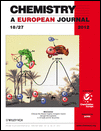 Stengl, V., Preparation of Graphene by Using an Intense Cavitation Field in a Pressurized Ultrasonic Reactor. Chemistry-a European Journal, 2012. 18(44): p. 14047-14054. DOI: 10.1002/chem.201201411
Stengl, V., Preparation of Graphene by Using an Intense Cavitation Field in a Pressurized Ultrasonic Reactor. Chemistry-a European Journal, 2012. 18(44): p. 14047-14054. DOI: 10.1002/chem.201201411
Abstract: A new and efficient method to produce a large quantity of high-quality and non-oxidized graphene flakes from powdered natural graphite by using a high-intensity cavitation field in a pressurized ultrasonic reactor is demonstrated. TEM and selected-area electron diffraction (SAED) confirmed the ordered graphite crystal structure of graphene. Atomic force microscopy (AFM) was used to examine the thickness of the graphene sheets. The delamination (exfoliation) of natural graphite in the liquid phase depends on the physical effects of ultrasound, which break down the 3D graphite structure into a 2D graphene structure. The prepared graphene is of high purity and without defects because no strongly oxidizing chemicals are used and no toxic products result. TEM shows that graphene nanosheets were produced with sizes in the range of tens to hundreds of square nanometers; these nanosheets were smooth and without any ripples and corrugations. High-resolution TEM (HRTEM) and SAED analysis confirmed that the products were graphene nanosheets.
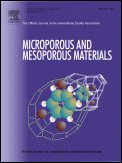 Stengl, V., D. Kralova, F. Oplustil and T. Nemec (2012). Mesoporous manganese oxide for warfare agents degradation. Microporous and Mesoporous Materials 156: 224-232.
Stengl, V., D. Kralova, F. Oplustil and T. Nemec (2012). Mesoporous manganese oxide for warfare agents degradation. Microporous and Mesoporous Materials 156: 224-232.
Abstract: Manganese(IV) oxides were prepared by homogeneous hydrolysis of potassium permanganate with 2-chloroacetamide and direct reaction of potassium permanganate with manganese(II) sulfate in aqueous solutions. Synthesized manganese(IV) oxides were characterized using Brunauer–Emmett–Teller (BET) surface area and Barrett–Joiner–Halenda porosity (BJH), X-ray diffraction (XRD), infrared spectroscopy (IR), and scanning electron microscopy (SEM). These oxides were taken for an experimental evaluation of their reactivity with sulfur mustard (HD or bis(2-Chloroethyl)sulfide), soman (GD or (3,3′-dimethylbutan-2-yl)-) and VX agent (S-[-(diisopropylamino)ethyl]-O-ethyl-methylphosphonothionate). The degree of conversion for sulfur mustard and agent VX is very good for both samples and come up to 95% and 99%, respectively. In the contrast to sulfur mustard and agent VX, degradation of soman was only 56% of the cryptomelane-type MnO2 and 18% of the birnessite-type MnO2.
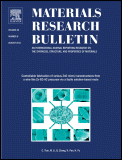 Stengl, V., T. Matys Grygar, J. Bludska, F. Oplustil and T. Nemec (2012). Mesoporous iron-manganese oxides for sulphur mustard and soman degradation. Materials Research Bulletin 47(12): 4291-4299.
Stengl, V., T. Matys Grygar, J. Bludska, F. Oplustil and T. Nemec (2012). Mesoporous iron-manganese oxides for sulphur mustard and soman degradation. Materials Research Bulletin 47(12): 4291-4299.
Abstract: Substituted iron(III)–manganese(III, IV) oxides, ammonio-jarosite and birnessite, were prepared by a homogeneous hydrolysis of potassium permanganate and iron(III) sulphate with 2-chloroacetamide and urea, respectively. Synthesised oxides were characterised using Brunauer–Emmett–Teller (BET) surface area and Barrett–Joiner–Halenda porosity (BJH), X-ray diffraction (XRD), infrared spectroscopy (IR), Raman spectroscopy and scanning electron microscopy (SEM). The oxides were taken for an experimental evaluation of their reactivity against sulphur mustard (HD) and soman (GD). When ammonio-jarosite formation is suppressed by adding urea to the reaction mixture, the reaction products are mixtures of goethite, schwertmannite and ferrihydrite, and their degradation activity against soman considerably increases. The best activities for the degradation of sulphur mustard (97.9% in 64 min) and soman (97.9% in 64 min) were observed for FeMn_75 with 32.6 wt.% Fe (36.8 wt.% Mn) and FeMn_37U with 60.8 wt.% Fe (10.1 wt.% Mn) samples, respectively
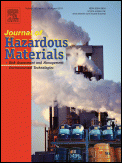 Stengl, V., T. Matys Grygar, F. Oplustil and T. Nemec (2012). Ge4+ doped TiO2 for stoichiometric degradation of warfare agents. Journal of Hazardous Materials 227: 62-67.
Stengl, V., T. Matys Grygar, F. Oplustil and T. Nemec (2012). Ge4+ doped TiO2 for stoichiometric degradation of warfare agents. Journal of Hazardous Materials 227: 62-67.
Abstract: Germanium doped TiO2 was prepared by homogeneous hydrolysis of aqueous solutions of GeCl4 and TiOSO4 with urea. The synthesized samples were characterized by X-ray diffraction, scanning electron microscopy, EDS analysis, specific surface area (BET) and porosity determination (BJH). Ge4+ doping increases surface area and content of amorphous phase in prepared samples. These oxides were used in an experimental evaluation of their reactivity with chemical warfare agent, sulphur mustard, soman and agent VX. Ge4+ doping worsens sulphur mustard degradation and improves soman and agent VX degradation. The best degree of removal (degradation), 100% of soman, 99% of agent VX and 95% of sulphur mustard, is achieved with sample with 2 wt.% of germanium.
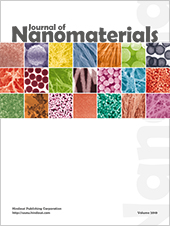 Stengl, V., T. Matys Grygar, J. Velicka, J. Henych and S. Bakardjieva (2012). Impact of Ge4+ Ion as Structural Dopant of Ti4+ in Anatase: Crystallographic Translation, Photocatalytic Behavior, and Efficiency under UV and VIS Irradiation. Journal of Nanomaterials.
Stengl, V., T. Matys Grygar, J. Velicka, J. Henych and S. Bakardjieva (2012). Impact of Ge4+ Ion as Structural Dopant of Ti4+ in Anatase: Crystallographic Translation, Photocatalytic Behavior, and Efficiency under UV and VIS Irradiation. Journal of Nanomaterials.
Abstract: Nanometric particles of germanium-doped TiO2 were prepared by homogeneous hydrolysis of TiOSO4 and GeCl4 in an aqueous solution using urea as the precipitation agent. Structural evolution during heating of these starting Ge-Ti oxide powders was studied by X-ray diffraction (XRD) and high-temperature X-ray powder diffraction (HTXRD). The morphology and microstructure changes were monitored by means of scanning electron microscopy (SEM), Raman and infrared spectroscopy (IR), specific surface area (BET), and porosity determination (BJH). The photocatalytic activity of all samples was determined by decomposition of Orange II dye under irradiation at 365nm and 400 nm. Moderate doping with concentration upto value 2.05wt.% positively influences azo dye degradation under UV and Vis light. Further improvement cannot be achieved by higher Ge doping. Effect of the annealing (200, 400, and 700°C) on photocatalysis and other properties has been assessed.
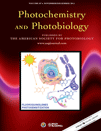 Stengl, V., F. Oplustil and T. Nemec (2012). In3+-doped TiO2 and TiO2/In2S3 Nanocomposite for Photocatalytic and Stoichiometric Degradations. Photochemistry and Photobiology 88(2): 265-276.
Stengl, V., F. Oplustil and T. Nemec (2012). In3+-doped TiO2 and TiO2/In2S3 Nanocomposite for Photocatalytic and Stoichiometric Degradations. Photochemistry and Photobiology 88(2): 265-276.
Abstract: A novel In3+-doped TiO2 and TiO2/In2S3 nanocomposites for photocatalytic degradation of environmental pollutants and stoichiometric degradation of warfare agents were prepared by a homogeneous hydrolysis with urea and thioacetamide, respectively. The prepared samples series TiInTAA were annealed at 600°C. The prepared samples were characterized by X-ray powder diffraction, IR spectroscopy, Raman spectroscopy, specific surface area (BET) and porosity determination. The method of UV–Vis diffuse reflectance spectroscopy was employed to estimate band-gap energies. The photocatalytic activity (PCA) was tested by degradation of Orange dye, whereas stoichiometric activity was studied by degradation of sulfur mustard. Incorporation of In3+ into titania lattice increases PCA of TiO2 in the visible light and increases stoichiometric decomposition of sulfur mustard against nondoped TiO2 as well. PCA of TiO2/In2S3 composite depends on the optimal ratio of TiO2:In2S3 in composite, while the activity for stoichiometric decomposition of sulfur mustards depends on the content of In2S3 in nanocomposite.
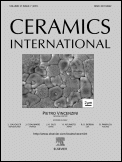 Ctibor, P., V. Stengl, I. Pis, T. Zahoranova and V. Nehasil (2012). Plasma sprayed TiO2: The influence of power of an electric supply on relations among stoichiometry, surface state and photocatalytic decomposition of acetone. Ceramics International 38(4): 3453-3458.
Ctibor, P., V. Stengl, I. Pis, T. Zahoranova and V. Nehasil (2012). Plasma sprayed TiO2: The influence of power of an electric supply on relations among stoichiometry, surface state and photocatalytic decomposition of acetone. Ceramics International 38(4): 3453-3458.
Abstract: The influence of input power on plasma sprayed coating was studied for a water-stabilized plasma spray torch (WSP®) and ceramic coatings formed from titanium dioxide (TiO2). All other spray setup parameters were secured during the experiment with electric supply power as the only variable factor. Physical characteristics of the coatings were tested by means of Raman spectroscopy and X-ray photoelectron spectroscopy which are able to determine the stoichiometry and surface chemical composition of the coatings. Further, stoichiometry and surface states are crucial for the photocatalytic efficiency of the coatings. The photocatalytic procedure involved was UV-induced decomposition of acetone. Links between the tested features are drawn. The lower supply power used during the spraying of TiO2 coating resulted in higher activity with respect to the photocatalytic point of view. Both the stoichiometry and surface composition are in the same time deviated from pure TiO2.
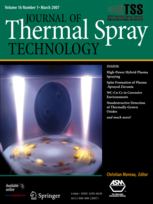 Ctibor, P., Z. Pala, J. Sedlacek, V. Stengl, I. Pis, T. Zahoranova and V. Nehasil (2012). Titanium Dioxide Coatings Sprayed by a Water-Stabilized Plasma Gun (WSP) with Argon and Nitrogen as the Powder Feeding Gas: Differences in Structural, Mechanical and Photocatalytic Behavior. Journal of Thermal Spray Technology 21(3-4): 425-434.
Ctibor, P., Z. Pala, J. Sedlacek, V. Stengl, I. Pis, T. Zahoranova and V. Nehasil (2012). Titanium Dioxide Coatings Sprayed by a Water-Stabilized Plasma Gun (WSP) with Argon and Nitrogen as the Powder Feeding Gas: Differences in Structural, Mechanical and Photocatalytic Behavior. Journal of Thermal Spray Technology 21(3-4): 425-434.
Abstract: Titanium dioxide coatings were sprayed by a water-stabilized plasma gun to form robust self-supporting bodies with a photocatalytically active surface. Agglomerated nanometric powder was used as a feedstock. In one case argon was used as a powder-feeding as well as coating-cooling gas whereas in the other case nitrogen was used. Stainless steel was used as a substrate and the coatings were released after the cooling. Over one millimeter thick self-supporting bodies were studied by XRD, HR-TEM, XPS, Raman spectroscopy, UV-VIS spectrophotometry and photocatalytic tests. Selected tests were done at the surface as well as at the bottom side representing the contact surface with the substrate during the spray process. Porosity was studied by image analysis on polished cross sections where also microhardness was measured. The dominant phase present in the sprayed samples was rutile, whereas anatase was only a minor component. The hydrogen content in the nitrogen-assisted coating was higher, but the character of the optical absorption edge remained the same for both samples. Photoelectron spectroscopy revealed differences in the character of the O1s peak between both samples. The photocatalytic activity was tested by decomposition of acetone at UV illumination, whereas also the end products—CO and CO2—were monitored. The nitrogen-assisted coating was revealed as a more efficient photocatalyst. Certain aspects of a thermal post-treatment on the coatings are discussed as well. Color and electrical conductivity are markedly changed at annealing at 760 °C, whereas only very small changes of the as-sprayed coating character correspond to annealing at 500 °C.

Stengl, V., T. Matys Grygar, J. Henych and M. Kormunda (2012). Hydrogen peroxide route to Sn-doped titania photocatalysts. Chemistry Central Journal 6., doi:10.1186/1752-153X-6-113
Abstract: TiO2-Graphene Oxide (TiO2 - GO) nanocomposite was prepared by thermal hydrolysis of suspension with graphene oxide (GO) nanosheets and titania peroxo-complex. The characterization of graphene oxide nanosheets was provided by using an atomic force microscope and Raman spectroscopy. The prepared nanocomposites samples were characterized by Brunauer–Emmett–Teller surface area and Barrett–Joiner–Halenda porosity, X-ray Diffraction, Infrared Spectroscopy, Raman Spectroscopy and Transmission Electron Microscopy. UV/VIS diffuse reflectance spectroscopy was employed to estimate band-gap energies. From the TiO2 - GO samples, a 300 μm thin layer on a piece of glass 10x15 cm was created. The photocatalytic activity of the prepared layers was assessed from the kinetics of the photocatalytic degradation of butane in the gas phase. The best photocatalytic activity under UV was observed for sample denoted TiGO_100 (k = 0.03012 h-1), while sample labeled TiGO_075 (k = 0.00774 h-1) demonstrated the best activity under visible light.
Kontakt
Ústav anorganické chemie AV ČR v.v.i.
250 68 Husinec-Řež
266 172 202
stengl@iic.cas.cz; stengl@me.com